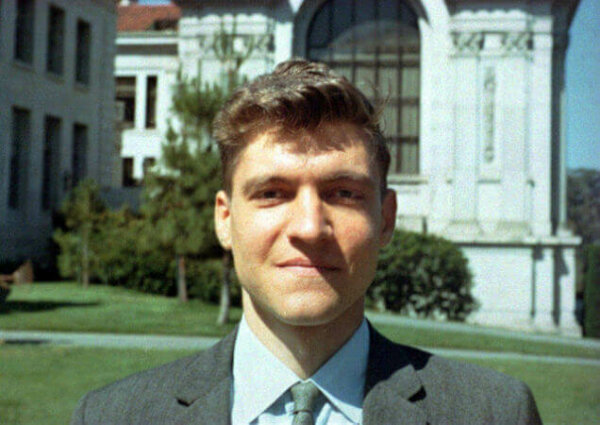The Harvard Experiment that Led to the Unabomber


Written and verified by the psychologist Valeria Sabater
Although he participated in a Harvard experiment and is extremely smart, Ted Kaczynski is now serving time in a maximum-security prison in Colorado. He’s been there since 1996. From there, he carries out an intense epistolary work with which he spreads the ideas in his manifesto “Industrial Society and Its Future“. The New York Times published it a year before his capture. It was a desperate attempt by the FBI to get someone to identify him. They wanted someone to recognize his peculiar and radical ideas about Western society.
The strategy was a success. Kaczynski was finally tried and convicted after over 20 years of investigations and three dead and 11 wounded. His determination doesn’t falter and he continues to transmit his sophisticated ideology to the world. It’s worth mentioning that the University of Michigan keeps and analyzes all of his letters, along with his well-known manifesto. It was translated into several languages. Also, it continues to be rather fascinating for the psychological, economic, and sociological community.
A previously unknown aspect of Kaczynski came to light in 2003. Historian Alston Chase published a revealing investigation that explains how Ted took part in a Harvard experiment, MK Ultra, for almost three years.
“There’s goоd reason to believe that primitive mаn suffered from less stress and frustration and was better satisfied with his way of life than modern mаn is.”
-Ted Kaczynski-

The Harvard experiment and the Unabomber
It took the FBI more than 20 years to track down Ted, the man who patiently planted 16 bombs throughout that time in strategic locations. The name “Unabomber” stemmed from his methodology and his precise targets: “University and Airline Bomber”.
As the story goes, that investigation was one of the most expensive in the United States. However, it wasn’t until the arrival of criminalist agent James R. Fitzgerald that Kaczynski felt his nemesis closing in until he finally caught him. However, the general public was surprised to learn who was the person behind all those acts. No one understood why a well-recognized Harvard mathematics professor could move from academic distinction to criminality.
Schizophrenia, paranoia, and antisocial personality disorder were some of the diagnoses that tried to explain his behavior. These ideas sought to reassure the population and offer a reason to something that baffled the general public. However, various reports went out in 2003. These once again shocked all those who were still interested in the Unabomber case.

Theodore Kaczynski arrived at Harvard University when he was just over 15 years old. He was a rather intelligent child. However, he was also emotionally vulnerable and still too young to cope with what was about to happen to him. The CIA was carrying out its mind control program at this university, using the most varied techniques for this purpose. Thus, he endured the administration of substances, hypnosis, electric shocks, and sophisticated psychological techniques.
This Harvard experiment lasted almost three years and Kaczynski was one of those experimental subjects. They easily manipulated him, given his youth and his high IQ.
How the experiment influenced his subsequent criminal behavior
In response to the question of whether the Harvard experiment instilled in him the antisocial and reactive seed that led to the manufacture of several bombs and subsequent attack on progress and technology, we must say it isn’t about a specific cause and effect. This is because many causes brought that behavior about in him.
Kaczynski was a privileged child who never fit into a group. He was always the youngest student in any classroom, the boy who enrolled in college as a teenager. In fact, he had to face abuse, scorn, mockery, and be a part of a government program that didn’t bring any academic benefit and traumatized him instead.
Ted’s theory that technology, far from being a facilitator, was an attack on humanity itself resulted from the Harvard experiment and subsequent experiences. According to him, people are slaves of all these technological advances, entities in a consumer society where people have lost the ability to choose.

After leaving the university where he worked as a professor, Kaczynski built a cabin in the woods outside Lincoln and retired as a hermit. There, he carried out his ideologies, drafted his manifesto with an old typewriter, and made sophisticated bombs.
This man continues to inspire books and television series. Although he’s 75 years old, people say that his mind is more active than ever and that he’s still determined to put an end to the techno-industrial society.
This text is provided for informational purposes only and does not replace consultation with a professional. If in doubt, consult your specialist.








